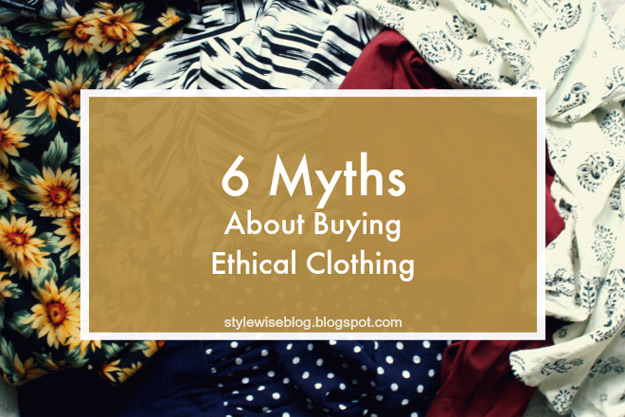The post below was originally published by Leah on Style Wise. It may challenge some of your viewpoints about ethical shopping, but it’s ultimately meant to empower you. You have more options for making a difference than you might think!

Far and away the most common negative comment I get on ethical fashion articles I’ve written for other sites is some variation of:
“Good for you for having enough money to buy expensive clothes. Some of us can’t afford to buy a closet full of ethical clothing and it’s classist for you to even mention it. Have you no pity on poor people in your own country? And have you considered the fact that people in foreign countries will lose their jobs if we stop buying from sweatshops? Better to have a lousy job than no job at all.”
Some of them are considerably less harsh and some are too horrific to repeat here, but it’s clear to me that the biggest deterrence to acquiring an ethical wardrobe is money. So let me clarify a few things.
Firstly, I absolutely do care about the plight of the poor in my own country. It’s despicable that, despite our national wealth, more than 45 million people live below the poverty line. And we’ve got a few social safety nets, but we haven’t really figured out how to help people get a leg up long term, and it’s only getting worse. And it’s just a matter of fact that low cost, sweatshop-sourced clothing may be the best financial option for a lot of people. If you live paycheck to paycheck and have trouble putting clothes on your back and the backs of your children, please know that I not only feel for you, but I think you need to make the best choice for your family, even if that means making the ethics of your clothing choices less of a priority, or not a priority at all. You are welcome to this conversation, of course, but you may have other things to worry about.
But I also know for a fact that a lot of you can afford to consider your purchases. You’re the ones I’m talking to (and I get the sense that, by and large, you’re also the ones making the most excuses). Reality check: I manage a local thrift shop and my husband is a grad student. We aren’t exactly making it rain over here. But we do benefit a lot from the knowledge that, if something were to happen to us, our parents would be able to step in to support us. We have a social network that makes us feel secure and that helps us make long term financial decisions we couldn’t make if we were going it completely alone. We also don’t have children to support, so our income stretches a bit further.
I am aware of my relative privilege, but I suspect there are a lot of you in my position who don’t realize that it is possible to change your spending habits without breaking the bank. If you can overcome a few prevalent myths, you’ll be on your way to making better choices in no time.
Myth 1: It’s a given that I will buy at least a dozen new items every season.
For many of us, it would be a financial disaster to buy more than a handful of fair trade clothing items every 6 months. But, if you’ve already built a basic wardrobe, you don’t need to buy more than a couple new things a year. Magazines and 5 week trend cycles make us feel obligated to keep up with every new fad on the market, but it isn’t necessary or even fulfilling. You may have to buy less if you’re purchasing from more ethical brands, but that probably won’t hurt you in the long run. Plus, in my own experience, fair trade and domestically produced items from small brands hold up better than fast fashion items anyway, so you won’t need to replace your staples as often.
Myth 2: I can’t dress well with secondhand items.
My go-to advice for people considering their purchases for the first time is to start with thrift shopping. The sticker shock of fair trade and sustainable items will wear off eventually, but in the meantime, try secondhand on for size. A lot of people insist that they can’t get high quality items at thrift shops, but I suspect they don’t regularly visit them. The thrift market is booming and it’s surprisingly easy to find something you like that’s in great condition.
And yes, thrift shopping is a more ethical option, even if you’re buying conventional brands there. Why? Because you’re not contributing to demand for new items and you’re ensuring that things don’t end up in the landfill so quickly. Additionally, money spent at thrift shops supports local charities.
Myth 3: My specific circumstances (size, profession, location) prevent me from buying from ethical retailers.
I feel you on this one. The ethical market is still growing and it’s not always easy – or possible – to find things that fit well or suit your lifestyle. To you, I’d suggest a few options:
- Buy from online consignment stores like thredUP and Twice. You may be able to find a greater variety of sizes and styles from secondhand sites online.
- Search ebay’s pre-owned section for brands you like.
- Buy well. If you can’t find ethical or secondhand options, try to buy things that will last. You’ll save money over time and you won’t contribute as heavily to demand for sweatshop goods. I do this with shoes, because it’s difficult to find well-made, comfortable shoes on the ethical market (though there are a growing number of companies filling the void).
